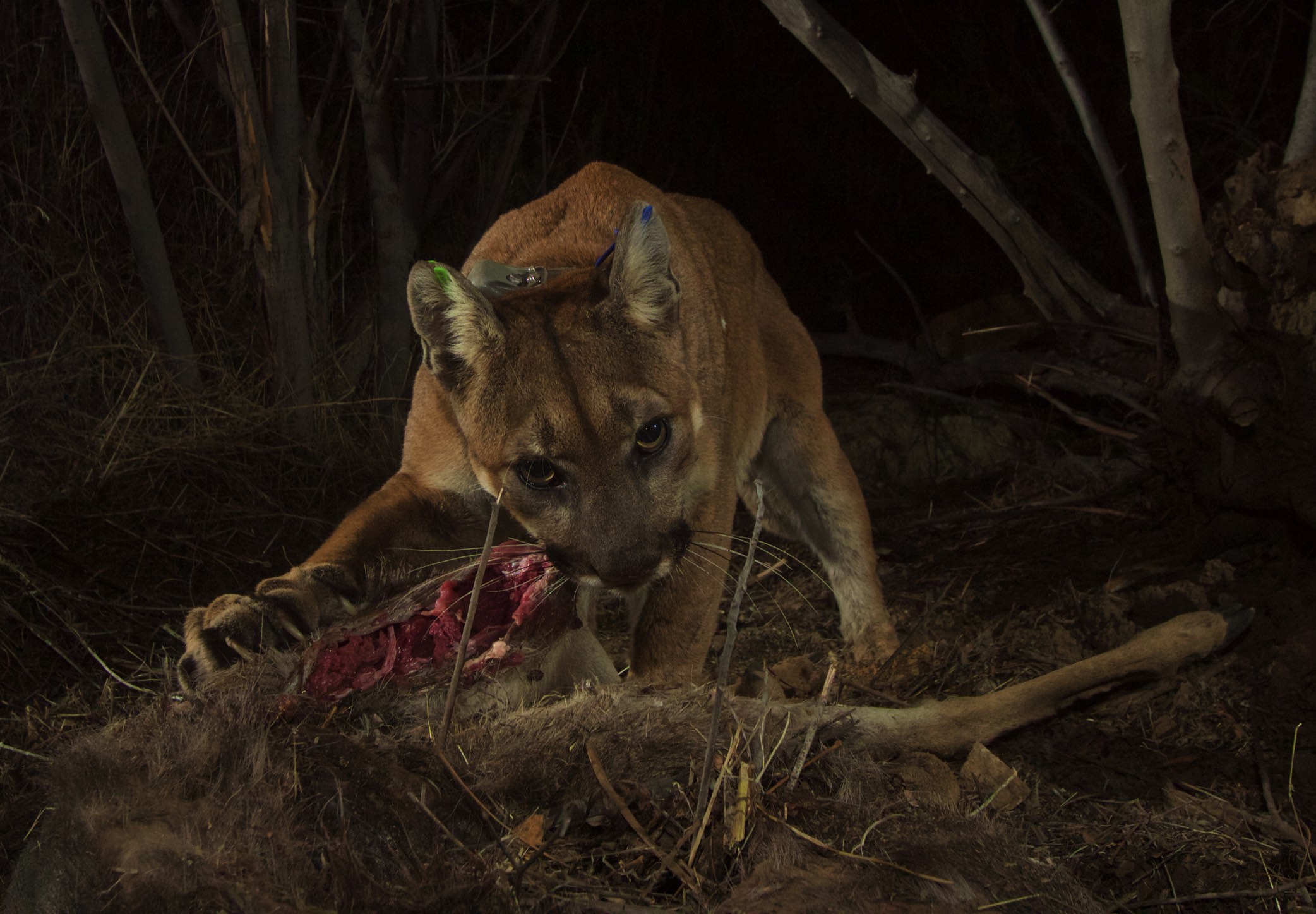
What happens when a large carnivore, such as a cougar (Puma concolor), kills an animal and then leaves the uneaten remains of the carcass to slowly decompose? That story of life, death, and rebirth of life through decomposing cells and eventual passage of nutrients and energy into other life forms is the complex story of ecology and all life on Earth.
Recently, the landscape ecology and nutrient dynamics of kills by large carnivores were explored by SoE wildlife ecologists, Drs. Lisa Shipley and Dan Thornton, along with former SoE graduate student, Michelle Peziol, and their colleagues, Dr. R. Dave Evans from the School of Biological Sciences, and L. Mark Elbroch from Panthera, the organization devoted to conservation of the wild cats of the world.
Large carnivores, such as cougars, often have disproportionate impacts on prey populations, community structure, and ecosystems. Students of wildlife population dynamics quickly learn about “top down” ecological forces (i.e., predator-driven) and “bottom up” forces (i.e., food resources from primary producers and plants) that influence community structure and prey populations.
These two ecological forces are often characterized as top-down, predator-controlled vs. bottom-up, resource-controlled (or food limited) factors structuring biological community food webs and the resulting energy flows through ecosystems.
SoE scientists and their colleagues reported in the journal, Landscape Ecology, that their studies of cougars (mountain lions) in the Yellowstone Ecosystem, revealed that carnivores influenced the spatial pattern of biogeochemical processes (e.g., nitrogen deposition) through their predation behavior and the resulting location and decomposition of carcasses on the landscape.
One of the more striking results from their studies was their estimate that the annual cougar kills in their study area contributed a carrion mass to the landscape equivalent to that of a blue whale. In addition, they found that cougar foraging was concentrated in only abut 4% of the landscape.
“Twelve pumas in Tetons produced annual prey mass comparable to size of blue whale,
the world’s largest animal, feeding hundreds of species” — Panthera
They note that carnivores influence the spatial pattern of nutrients and biogeochemical processes on landscapes through indirect processes such as influencing the behavior of prey (i.e., predator avoidance) and where they forage and defecate, but also directly by predation and carcass decomposition.
Consequently, the impacts of cougar kills and carcass decomposition on ecosystem nutrient dynamics are complex and have wide-ranging effects on soil and plant chemistry, community diversity and structure, invertebrates and scavenger communities, and many other facets of ecosystems.
These types of results help illustrate the tremendous importance of large carnivores in ecosystems and the need to conserve not just a given species of a large carnivore, but also the energy flows and ecological processes that drive ecosystems and support life in the natural world.
To Learn More:
See Panthera: ‘Garden to Hunt’: Panthera Study Shows Pumas Utilize Sly Strategy of Fertilizing Plants That Recruit Prey to Hunting Hotspots
See: Phys.org – Study suggests pumas utilize sly strategy of fertilizing plants that recruit prey to hunting grounds
Scientific Publication – Landscape Ecology: Large carnivore foraging contributes to heterogeneity in nutrient cycling
